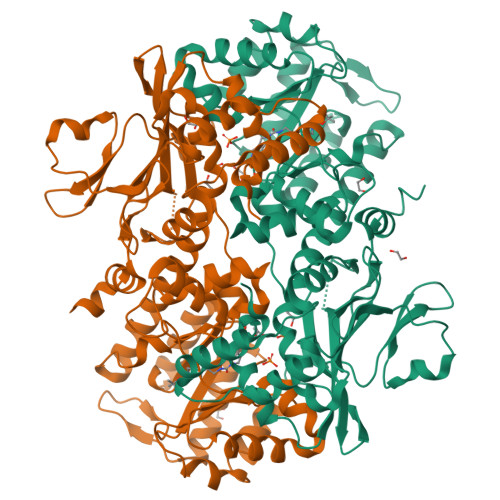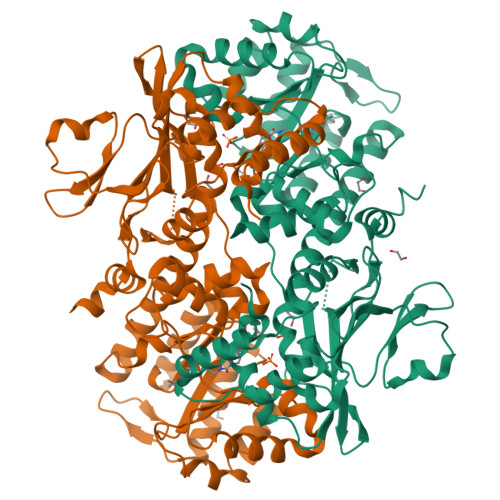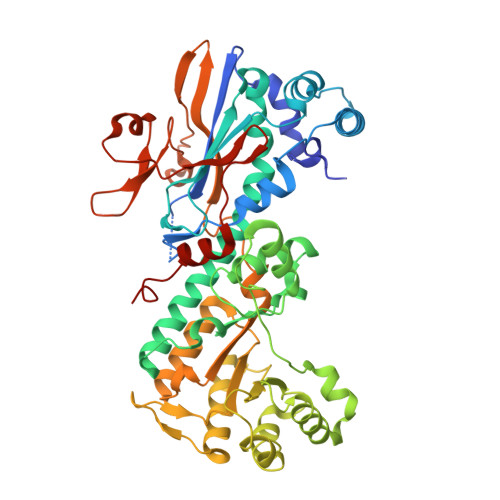Minimizing CYP2C9 Inhibition of Exposed-Pyridine NAMPT (Nicotinamide Phosphoribosyltransferase) Inhibitors.
Zak, M., Yuen, P.W., Liu, X., Patel, S., Sampath, D., Oeh, J., Liederer, B.M., Wang, W., O'Brien, T., Xiao, Y., Skelton, N., Hua, R., Sodhi, J., Wang, Y., Zhang, L., Zhao, G., Zheng, X., Ho, Y.C., Bair, K.W., Dragovich, P.S.(2016) J Med Chem 59: 8345-8368
- PubMed: 27541271
- DOI: https://doi.org/10.1021/acs.jmedchem.6b00697
- Primary Citation of Related Structures:
5KIT - PubMed Abstract:
NAMPT inhibitors may show potential as therapeutics for oncology. Throughout our NAMPT inhibitor program, we found that exposed pyridines or related heterocyclic systems in the left-hand portion of the inhibitors are necessary pharmacophores for potent cellular NAMPT inhibition. However, when combined with a benzyl group in the center of the inhibitors, such pyridine-like moieties also led to consistent and potent inhibition of CYP2C9. In an attempt to reduce CYP2C9 inhibition, a parallel synthesis approach was used to identify central benzyl group replacements with increased Fsp3. A spirocyclic central motif was thus discovered that was combined with left-hand pyridines (or pyridine-like systems) to provide cellularly potent NAMPT inhibitors with minimal CYP2C9 inhibition. Further optimization of potency and ADME properties led to the discovery of compound 68, a highly potent NAMPT inhibitor with outstanding efficacy in a mouse tumor xenograft model and lacking measurable CYP2C9 inhibition at the concentrations tested.
Organizational Affiliation:
Genentech Inc. , 1 DNA Way, South San Francisco, California 94080, United States.





















